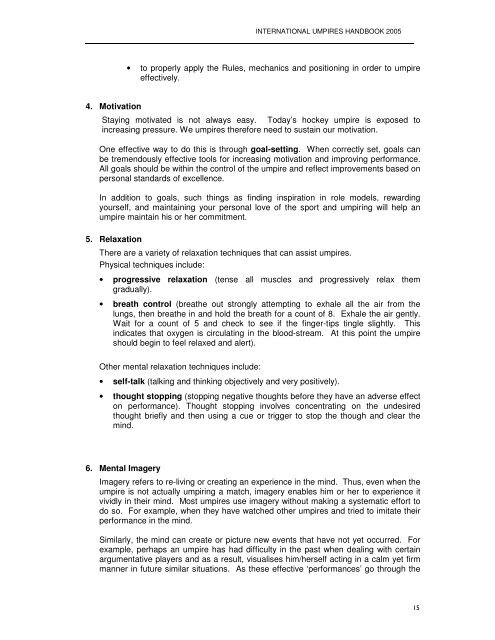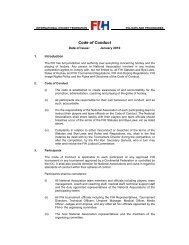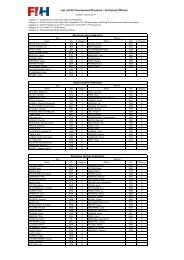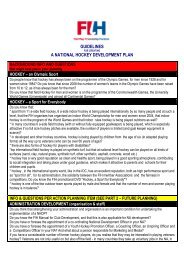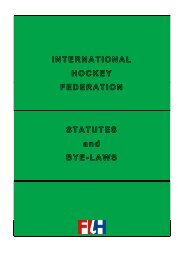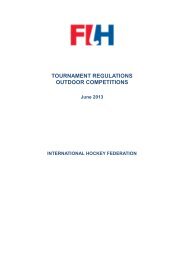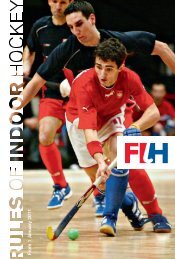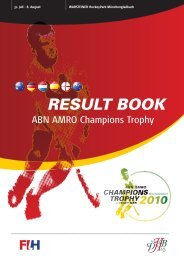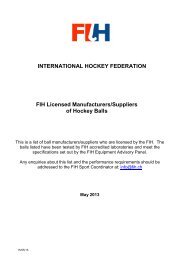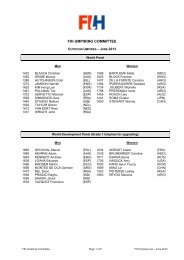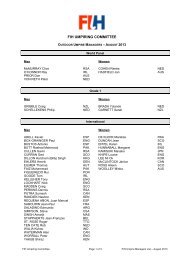Umpire's Handbook - International Hockey Federation
Umpire's Handbook - International Hockey Federation
Umpire's Handbook - International Hockey Federation
You also want an ePaper? Increase the reach of your titles
YUMPU automatically turns print PDFs into web optimized ePapers that Google loves.
INTERNATIONAL UMPIRES HANDBOOK 2005 • to properly apply the Rules, mechanics and positioning in order to umpireeffectively.4. MotivationStaying motivated is not always easy. Today’s hockey umpire is exposed toincreasing pressure. We umpires therefore need to sustain our motivation.One effective way to do this is through goal-setting. When correctly set, goals canbe tremendously effective tools for increasing motivation and improving performance.All goals should be within the control of the umpire and reflect improvements based onpersonal standards of excellence.In addition to goals, such things as finding inspiration in role models, rewardingyourself, and maintaining your personal love of the sport and umpiring will help anumpire maintain his or her commitment.5. RelaxationThere are a variety of relaxation techniques that can assist umpires.Physical techniques include:• progressive relaxation (tense all muscles and progressively relax themgradually).• breath control (breathe out strongly attempting to exhale all the air from thelungs, then breathe in and hold the breath for a count of 8. Exhale the air gently.Wait for a count of 5 and check to see if the finger-tips tingle slightly. Thisindicates that oxygen is circulating in the blood-stream. At this point the umpireshould begin to feel relaxed and alert).Other mental relaxation techniques include:• self-talk (talking and thinking objectively and very positively).• thought stopping (stopping negative thoughts before they have an adverse effecton performance). Thought stopping involves concentrating on the undesiredthought briefly and then using a cue or trigger to stop the though and clear themind.6. Mental ImageryImagery refers to re-living or creating an experience in the mind. Thus, even when theumpire is not actually umpiring a match, imagery enables him or her to experience itvividly in their mind. Most umpires use imagery without making a systematic effort todo so. For example, when they have watched other umpires and tried to imitate theirperformance in the mind.Similarly, the mind can create or picture new events that have not yet occurred. Forexample, perhaps an umpire has had difficulty in the past when dealing with certainargumentative players and as a result, visualises him/herself acting in a calm yet firmmanner in future similar situations. As these effective ‘performances’ go through the


